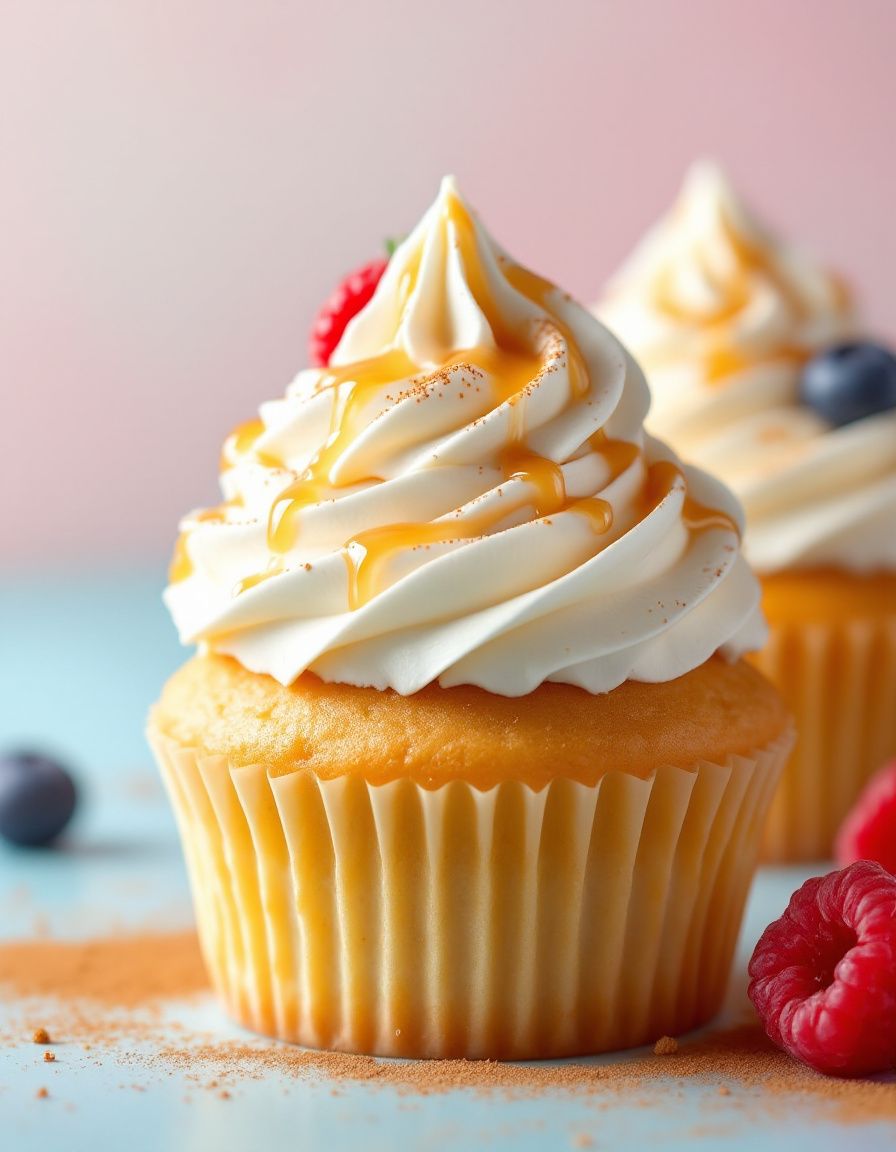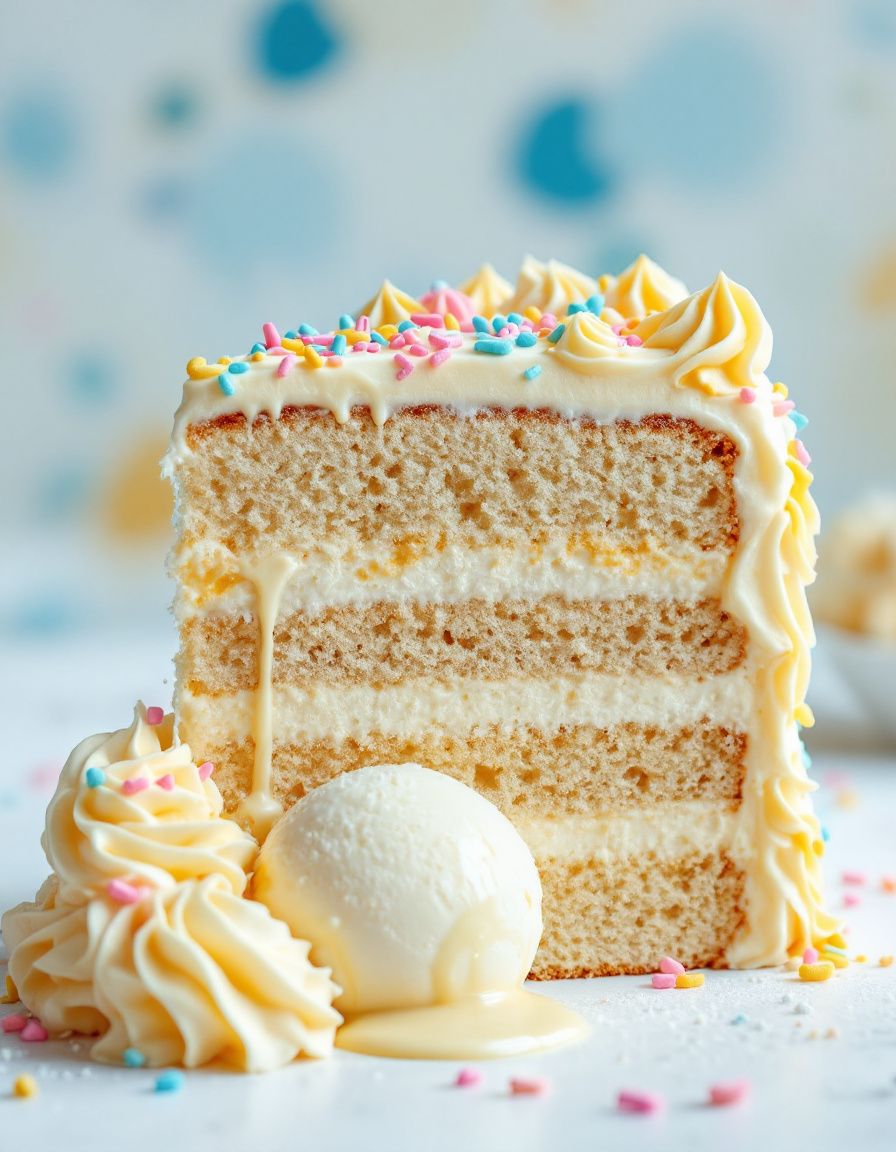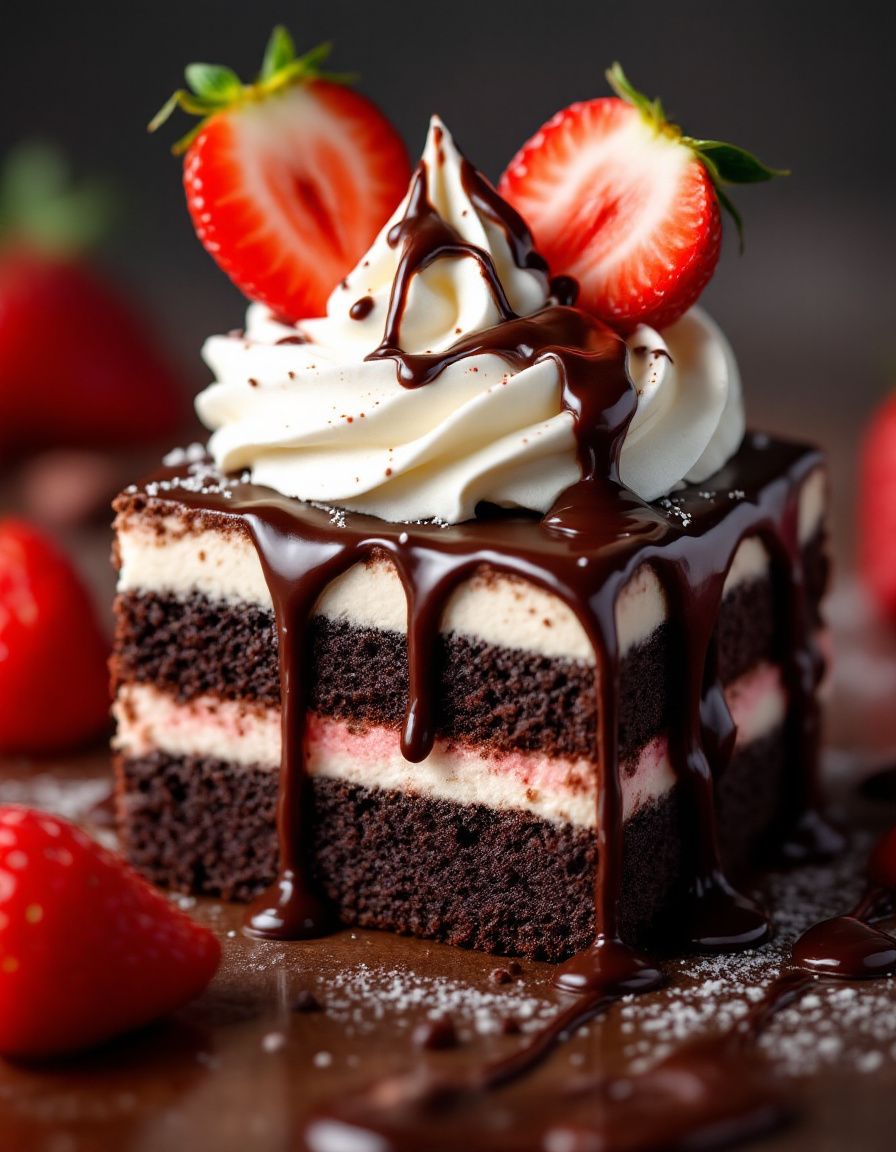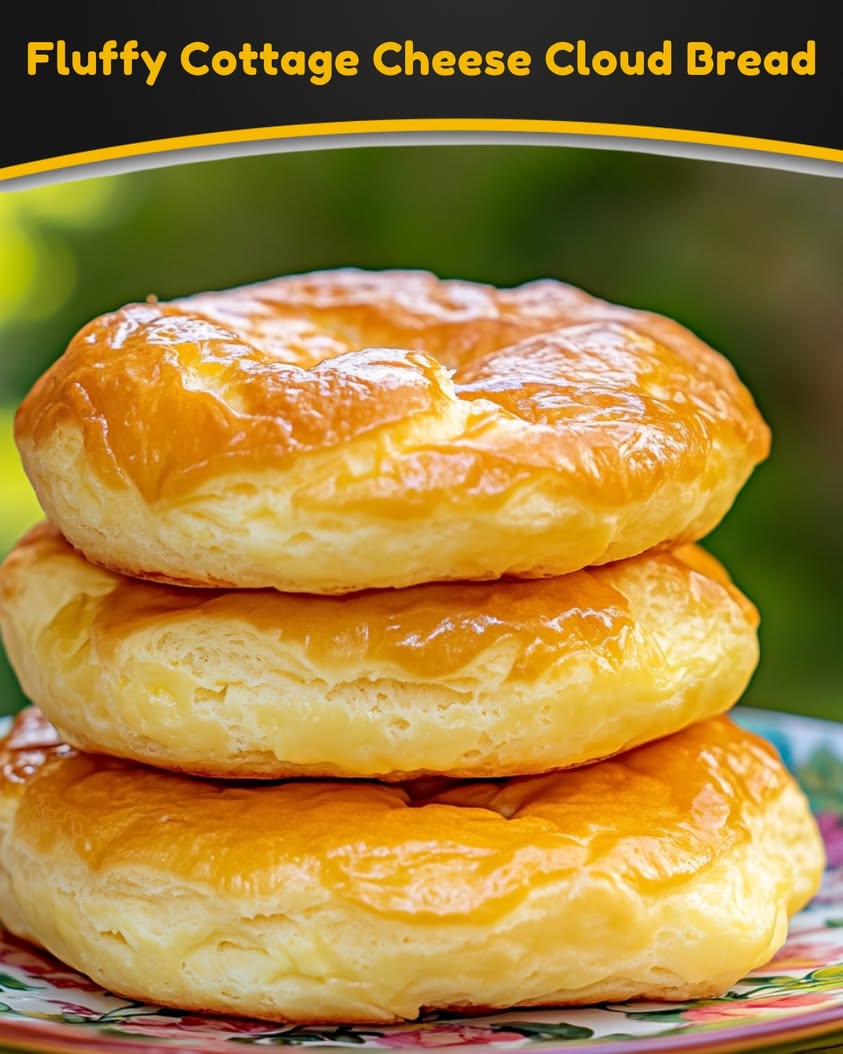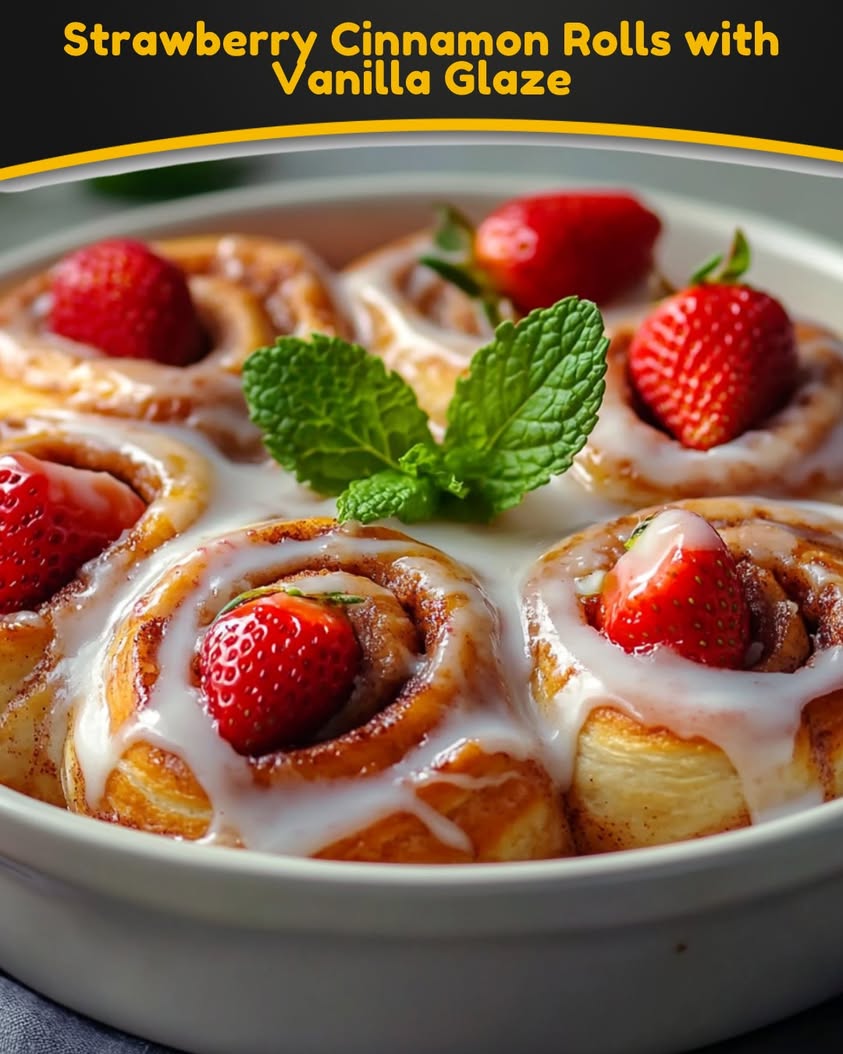Tres Leches Cupcakes: A Rich and Creamy Delight
Tres Leches Cupcakes are a delightful twist on the classic tres leches cake, offering a bite-sized version of this beloved Latin American dessert. These cupcakes are soaked in a rich blend of three kinds of milk, making each bite incredibly moist and bursting with flavor. The creamy topping, often whipped cream, adds a lightness that perfectly balances the sweetness of the cake, transforming a traditional dessert into an exciting new treat.
The process of creating these cupcakes is an adventure in flavor and texture. From the moment you whip the egg whites to create a fluffy batter, to the moment you drizzle the milk mixture over the cupcakes, each step is an invitation to indulge in a creamy, dreamy experience. With their visually appealing look and inviting aroma, these cupcakes are perfect for any gathering or celebration, making them an instant favorite at parties or intimate family dinners.
Quick Recipe Highlights
- Flavor Profile: The cupcakes boast a perfect balance of sweetness, creaminess, and a hint of vanilla, enhanced by the rich, milky soak.
- Texture: Expect a moist, tender crumb that melts in your mouth, contrasted with the light, airy whipped cream topping.
- Aroma: The delightful aroma of vanilla and sweet milk wafts through the air, inviting everyone to come and enjoy.
- Visual Appeal: Topped with freshly whipped cream and a sprinkle of cinnamon or fruit, these cupcakes are as beautiful as they are delicious.
- Skill Level Needed: This recipe requires basic baking skills, including mixing, folding, and whipping techniques.
- Special Equipment: Use standard cupcake pans, mixing bowls, and an electric mixer for the best results.
Recipe Overview
- Difficulty Level: These cupcakes are classified as medium in difficulty. While they require several steps, the process is straightforward, and the rewards are well worth the effort.
- Category: Perfect for desserts, snacks, or special occasions, these cupcakes fit seamlessly into any celebratory menu.
- Cuisine: Tres leches is a traditional Mexican dessert that has spread throughout Latin America, celebrated for its richness and unique texture.
- Cost: Ingredients are generally affordable, making this a budget-friendly dessert option that impresses guests without breaking the bank.
- Season: While these cupcakes are suitable year-round, they shine particularly in summer and spring, adding a refreshing treat to warm weather gatherings.
- Occasion: Ideal for birthdays, anniversaries, or even casual get-togethers, these cupcakes are versatile and loved by many.
Why You’ll Love This Recipe
Tres Leches Cupcakes are a delicious treat, perfect for those who appreciate rich and creamy desserts. Each cupcake absorbs the milk soak, creating a heavenly texture that is both moist and tender. The fluffy whipped cream on top adds a light finish, making the entire experience incredibly satisfying and indulgent.
One of the best aspects of this recipe is its convenience. With straightforward instructions, even novice bakers can achieve delicious results. The ability to prepare these cupcakes in advance is another huge plus—simply soak them and refrigerate until serving, freeing you to enjoy your event without stress.
Nutritionally, while Tres Leches Cupcakes are a treat to be enjoyed occasionally, they provide an opportunity to use high-quality ingredients. By choosing organic dairy, you can enhance the taste while enjoying the benefits of better nutrition.
Socially, these cupcakes are perfect for sharing. Their charming appearance and delightful flavor invite conversation and compliments, making them a highlight on any dessert table.
Moreover, this recipe is economically accessible, as it does not require expensive ingredients. With just a few staples, you can create an impressive dessert that is sure to impress your friends and family.
Historical Background and Cultural Significance
The origins of Tres Leches Cake can be traced back to Latin America, with various countries claiming its creation. The cake is believed to have been inspired by the traditional dessert of soaking cakes in milk, likely dating back to the colonial period.
Culturally, tres leches represents celebration and hospitality in many Latin American countries, frequently served on birthdays and significant holidays. Its creamy essence and rich flavors make it a classic that evokes nostalgia among those who grew up enjoying it.
Over time, recipes for tres leches have evolved, adapting to regional tastes. Variations like adding fruit, nuts, or different flavored creams have emerged, contributing to its popularity.
Regional differences have also led to variations in preparation methods; for instance, some areas prefer a denser cake texture, while others favor a lighter sponge. Each region takes pride in its unique approach to this beloved dessert.
Ingredient Deep Dive
- Flour: The base for cupcakes, flour provides structure. Opt for all-purpose flour for a balanced texture, and consider wheat flour for a nuttier flavor.
- Milk: The heart of the tres leches, this is where the richness comes from. Whole milk adds the needed creaminess, while evaporated and condensed milk elevate flavors and sweetness.
- Sugar: Essential for sweetness and moisture, sugar also helps with the cupcake’s browning and texture.
Flour is crucial in creating the right balance between tenderness and structure in cupcakes. It’s important to sift before measuring; this aerates the flour and leads to lighter cupcakes. Store flour in a cool, dry place to prolong its shelf life, and consider using it within six months for optimal freshness.
Each type of milk contributes to a unique profile. Whole milk provides moisture, while sweetened condensed milk and evaporated milk add sweetness and depth. Look for products with no added preservatives, and once opened, store milk in the fridge. Substitute with coconut or almond milk for a non-dairy version.
Sugar can be adjusted according to preference. Granulated sugar is standard, but brown sugar offers a richer taste. Keep sugar in a cool, airtight container to prevent clumping.
Common Mistakes to Avoid
- Overmixing the batter: This can lead to dense cupcakes instead of light, fluffy ones. Mix until just combined.
- Not beating egg whites properly: Undermixed whites will prevent the cake from rising. Look for stiff peaks during whipping.
- Skimping on soaking time: Allowing the cupcakes to soak adequately ensures each bite is rich and creamy.
- Not refrigerating: Tres leches cupcakes taste best chilled. Don’t skip this essential step.
- Skipping the whipped cream topping: This lightens the dessert and enhances the flavor; it’s an essential element.
- Using low-fat dairy: Stick with whole milk and creams for the richest flavor.
- Inaccurate measuring of ingredients: Use kitchen scales for precision, especially for flour and sugar.
- Forgetting to check for doneness: Use a toothpick; if it comes out clean, the cupcakes are ready!
Essential Techniques
Whipping Egg Whites: Properly whipped egg whites are essential for creating a fluffy cupcake. Use a clean bowl and beaters, and ensure that there are no yolks mixed in. Whip until stiff peaks form, allowing the cupcakes to rise beautifully.
Creaming Butter and Sugar: This technique incorporates air into the mixture, resulting in a lighter texture. Beat the butter until smooth before gradually adding sugar, mixing until fluffy. Avoid over-mixing once the eggs are added, to maintain aeration.
Pro Tips for Perfect Tres Leches Cupcakes
1. Use room temperature ingredients for a more even batter.
2. Don’t rush the soaking process; patience results in ultimate flavor absorption.
3. Chill the cupcakes for a couple of hours after soaking for the best taste.
4. Experiment with infused creams, such as vanilla bean or coconut, for added flavor.
5. Add a splash of rum or flavored extract for a unique twist.
6. For added presentation, garnish with fresh fruit or chocolate shavings before serving.
7. Use a serrated knife to slice off the tops if you plan to stack the whipped cream higher.
8. Store leftovers covered in the fridge to ensure they stay moist.
Variations and Adaptations
This recipe lends itself beautifully to adaptations. Consider adding a tropical twist by incorporating coconut milk as part of the soaking mixture. Alternatively, chocolate lovers can add cocoa powder to the batter for a rich chocolate version. For a fruity variation, try adding a layer of strawberries or mangoes atop the whipped cream.
For seasonal adaptations, pumpkin purée can be added to the batter during the fall months, giving a festive flavor to the cupcakes. Dietary modifications are also possible; gluten-free flour blends work well for those avoiding gluten, while a dairy-free milk option can replace traditional dairy.
Presentation is flexible too; consider using mini cupcake liners for bite-sized treats perfect for parties, or layer cupcakes with fruit and cream in trifle dishes for a stunning dessert display.
Serving and Presentation Guide
When serving Tres Leches Cupcakes, consider using simple yet elegant plating techniques. Arrange cupcakes on a beautiful platter, and sprinkle with cinnamon or shredded coconut for added visual appeal. A dollop of whipped cream and fresh berries enhances presentation while adding flavor.
Garnish ideas include mint leaves or citrus zest for a pop of color. Traditional accompaniments of fresh fruit, such as strawberries, serve to complement the flavors. For modern serving suggestions, use clear cups or jars to create individual servings with layers of cupcakes and cream.
An important tip: serve these cupcakes chilled, as they taste best refreshing and cool, allowing the full flavor profiles to shine.
Wine and Beverage Pairing
When it comes to pairing beverages with Tres Leches Cupcakes, consider a light dessert wine, such as a Moscato or a sweet Riesling. The delicate sweetness of the wine enhances the flavor of the cupcakes without overpowering them.
For a non-alcoholic alternative, try serving chilled hibiscus tea, which brings a refreshing tartness that pairs well with the rich creaminess of the cupcakes. For coffee lovers, a lightly brewed espresso or cappuccino serves as an excellent accompaniment, highlighting the dessert’s flavors.
Consider the serving temperature of beverages; chilled options will maintain a refreshing balance against the rich cupcakes.
Storage and Shelf Life
Tres Leches Cupcakes are best stored in the refrigerator due to the whipped cream topping and milk soak. Store them in an airtight container to maintain moisture and prevent drying out. They will remain fresh for about three days in the fridge, making them perfect for make-ahead dessert options.
If you notice any signs of spoilage, such as a sour smell or discoloration in the cream, it’s best to discard them. Freezing is not recommended due to the texture of the whipped cream but if necessary, cupcakes can be frozen before soaking for up to a month, ensuring freshness when you’re ready to prepare the dessert.
Make Ahead Strategies
Planning ahead is an excellent strategy when making Tres Leches Cupcakes. You can bake and cool the cupcakes a day in advance and leave them covered at room temperature. The soaking process can be done the day of serving, enhancing flavor without sacrificing texture as it absorbs the creamy mixture.
Ensure to store the whipped cream separately before serving, as it helps maintain its texture. Once ready to serve, quickly top the cupcakes and chill them to ensure they are nice and cold.
Scaling Instructions
If you’re looking to accommodate more guests, scaling up this recipe is straightforward. Doubling the ingredients will yield 24 cupcakes, but ensure to bake in batches if your oven can’t handle full pans. The cooking time may vary slightly with more cupcakes in the oven, so check for doneness accordingly.
For a smaller gathering, halving the recipe is an easy option. Simply divide all ingredients by two and adjust your pan size if necessary.
Nutritional Deep Dive
Each cupcake provides a delightful dessert experience, although they’re rich in calories and sugar. A macro breakdown shows a good source of carbohydrates and fats, thanks to the creamy toppings.
Micronutrient analysis may vary, but including whole dairy adds essential vitamins like calcium and vitamin D.
Enjoying each cupcake in moderation can fit well within a balanced diet, especially when shared among family and friends. For those monitoring portions, consider using mini cupcake liners to create smaller servings.
Dietary Adaptations
For a gluten-free version, substitute all-purpose flour with a gluten-free blend and ensure all other ingredients are also gluten-free certified.
Those with dairy concerns can adapt the recipe using almond or coconut milk, and whipped coconut cream instead of traditional whipped topping.
A vegan version can be achieved by swapping eggs for flaxseed meal or aquafaba, along with using non-dairy milk and cream.
Low-carb or keto modifications can be made by utilizing almond flour and a sugar substitute, turning this tasty dessert into a low-carb treat without sacrificing flavor.
Troubleshooting Guide
A common issue with these cupcakes might be overly dense texture, often caused by overmixing the batter. Aim for minimal mixing after adding flour to keep the texture light.
If the flavor lacks balance, consider adjusting sugar levels in the milk soak—taste it before pouring over the cupcakes.
If your whipped cream doesn’t hold its shape, ensure to chill your bowl and beaters before whipping and avoid overwhipping.
Timing can also be crucial; if they seem undercooked after the suggested time, do the toothpick test for doneness and adjust cooking times accordingly.
Recipe Success Stories
After sharing this delightful recipe, many bakers have raved about their results. From perfect texture to adjusted flavors, readers frequently comment on how this dessert has become a staple at family gatherings.
Several have shared tips on personal adaptations, such as the inclusion of unique flavor profiles, showcasing how versatile the cupcakes can be.
Readers have also expressed joy in capturing images of their creations, emphasizing how visually stunning the cupcakes are when garnished.
Photographic tips have pinpointed the best angles and lighting to highlight the inviting layers of whipped cream and milky goodness, making it a feast for the eyes as well as the palate.
Frequently Asked Questions
Can I use any type of milk?
A mix of whole milk, evaporated milk, and sweetened condensed milk is traditional, but you can substitute with alternatives like almond or coconut milk for a dairy-free variation.
How do I know when my cupcakes are done baking?
Insert a toothpick in the center of the cupcake; if it comes out clean or with a few crumbs, they are done. Be careful not to overbake.
Can I make this recipe vegan?
Yes, you can replace eggs with a flaxseed mixture and use vegan alternatives for the milk and whipped cream.
How long will these cupcakes last?
Stored in the fridge, they can last for about three days, but they are best enjoyed fresh.
What can I use instead of whipped cream?
You can use whipped coconut cream or a non-dairy whipped topping to suit dietary preferences.
Can I freeze these cupcakes?
It’s not recommended to freeze after soaking, but you can freeze the unsoaked cupcakes for later use.
What is the best way to serve them?
Serve chilled, topped with whipped cream and garnished with fresh fruit or toasted coconut for a beautiful presentation.
How can I make the cupcakes more flavorful?
Consider adding flavor extracts, such as almond or coconut, to the batter and soak for richer layers of flavor.
Can I make mini versions of these cupcakes?
Absolutely! Just reduce the baking time and adjust the soaking time as needed for smaller cupcakes.
Are these cupcakes suitable for children?
Yes, they are generally safe for children, but moderation is key due to their sweetness.
Additional Resources
For those looking to expand their dessert repertoire, consider exploring other Latin American flavors and dessert recipes. Recipes like flan or empanadas offer interesting variations that complement Tres Leches Cupcakes beautifully.
Technique guides on whipping cream or baking cupcakes can provide deeper insights into perfecting your baking skills. Understanding ingredient selection and equipment recommendations can further enhance your baking endeavors.
Consider exploring seasonal variations as well, aligning your baking with fresh ingredients to keep your offerings new and exciting.
Join the Conversation
We invite you to share your adventures in baking Tres Leches Cupcakes! Post pictures of your creations on social media, tag your friends, and inspire them to try this delightful recipe.
Feedback, variations, and learning alongside fellow baking enthusiasts enrich our community. Whether it’s through comments, recipe reviews, or personal adaptations, your experiences help others in their culinary journeys.
Let’s create a thriving community of dessert lovers who appreciate the rich history and delicious flavor of Tres Leches Cupcakes!
The Recipe
Tres Leches Cupcakes
Serves: 12 cupcakes
Prep Time: 30 mins
Cook Time: 20 mins
Total Time: 50 mins
Kitchen Equipment Needed
- Cupcake pan
- Parchment paper liners
- Mixing bowls
- Electric mixer
- Toothpick for testing
Ingredients
- 1 ½ cups all-purpose flour
- 1 ½ tsp baking powder
- ½ tsp salt
- 1/3 cup unsalted butter, softened
- 1 cup granulated sugar
- 3 large eggs
- 1 tsp vanilla extract
- 1 cup whole milk
- 1 cup sweetened condensed milk
- 1 cup evaporated milk
- 1 ½ cups heavy whipping cream
Directions
- Preheat your oven to 350°F (175°C) and line a cupcake pan with liners.
- In a mixing bowl, sift together flour, baking powder, and salt.
- In another bowl, cream the softened butter and sugar until light and fluffy; add the eggs, one at a time, mixing well after each addition. Add vanilla extract.
- Gradually mix the dry ingredients into the wet ingredients, alternating with the whole milk until well combined.
- Fill cupcake liners about 2/3 full with batter and bake for 18-20 minutes or until a toothpick inserted comes out clean.
- Once cooled, mix the sweetened condensed milk, evaporated milk, and remaining whole milk in a bowl.
- Using a toothpick, poke holes in the cooled cupcakes and slowly drizzle the milk mixture over each cupcake, allowing it to soak.
- For the frosting, whip the heavy cream until stiff peaks form and frost the soaked cupcakes generously.
- Garnish with cinnamon or fresh fruit if desired.
Recipe Notes
- Adjust sweetness as needed based on personal preference.
- Feel free to experiment with flavored extracts in the frosting.
- These cupcakes are best served chilled and can be made a day in advance.
